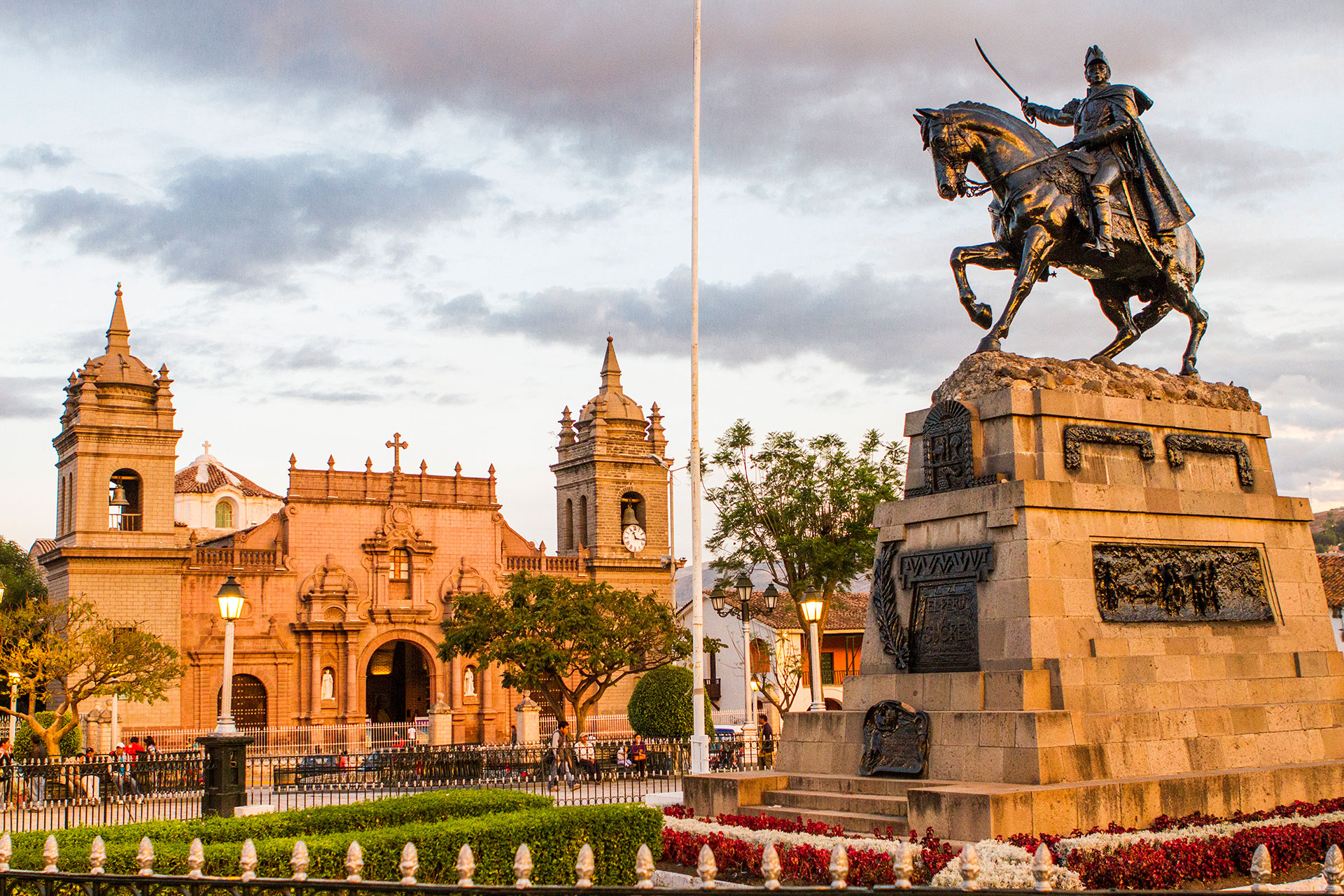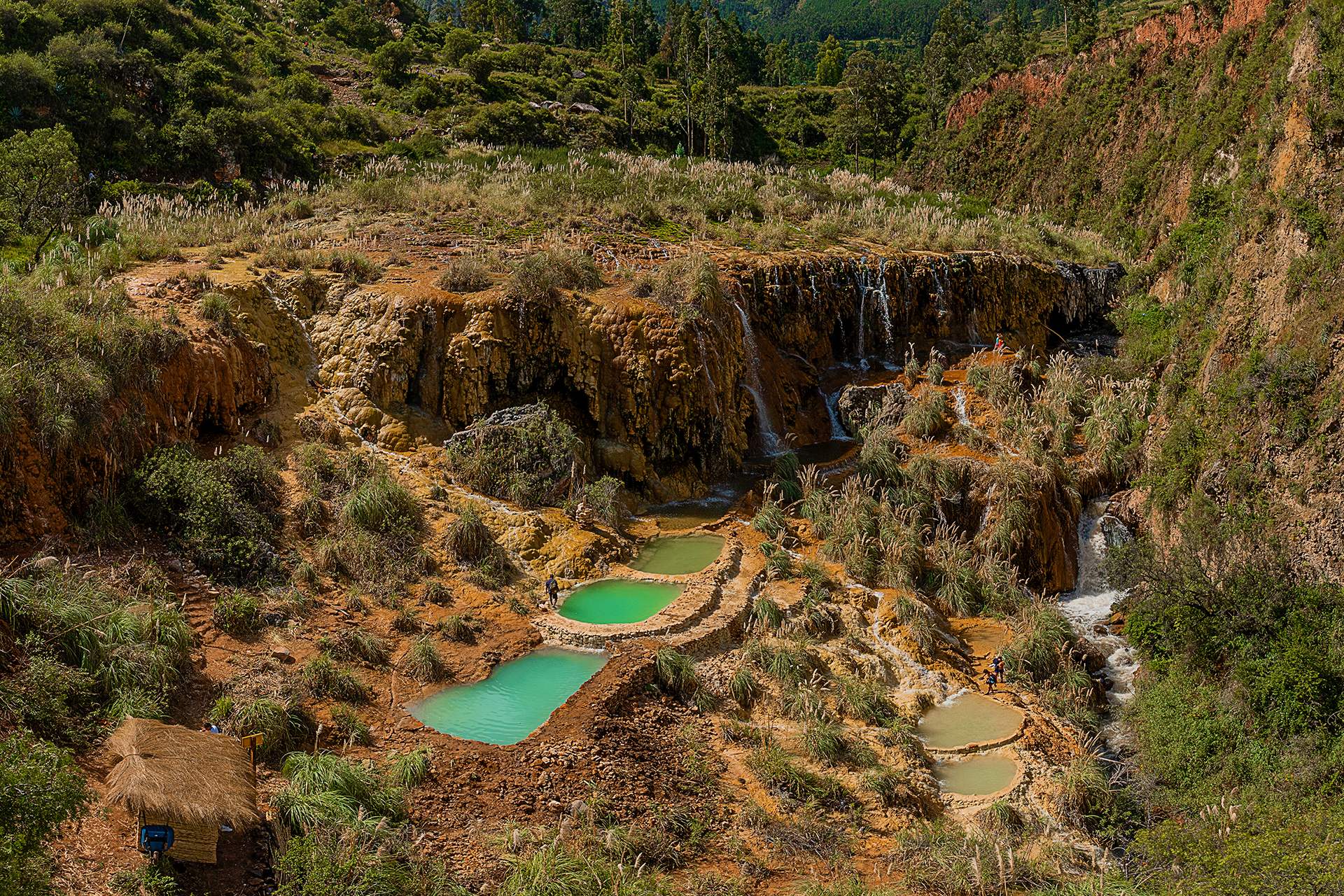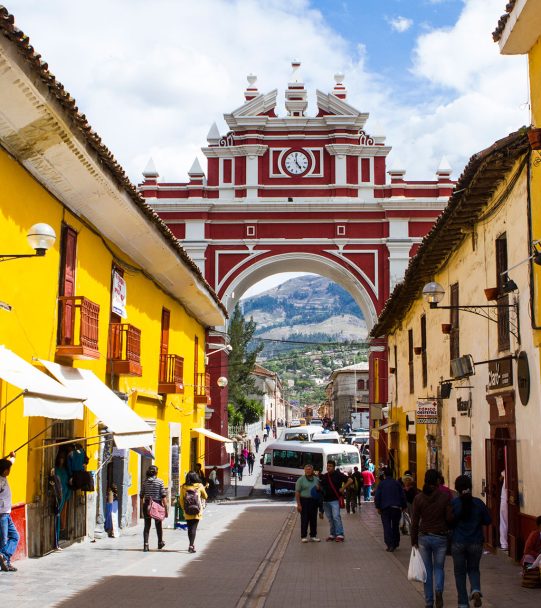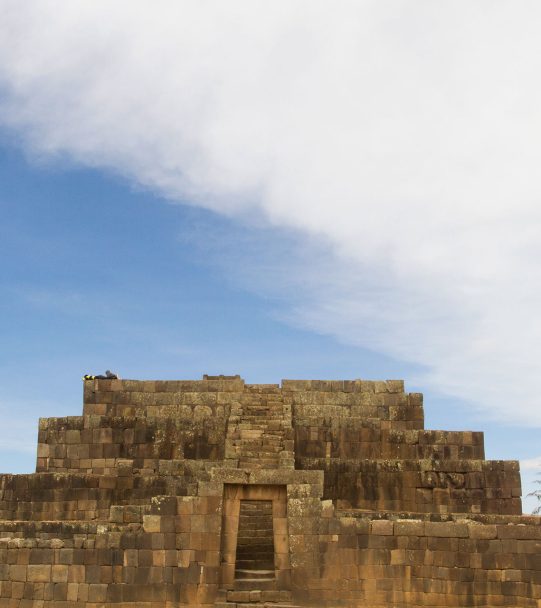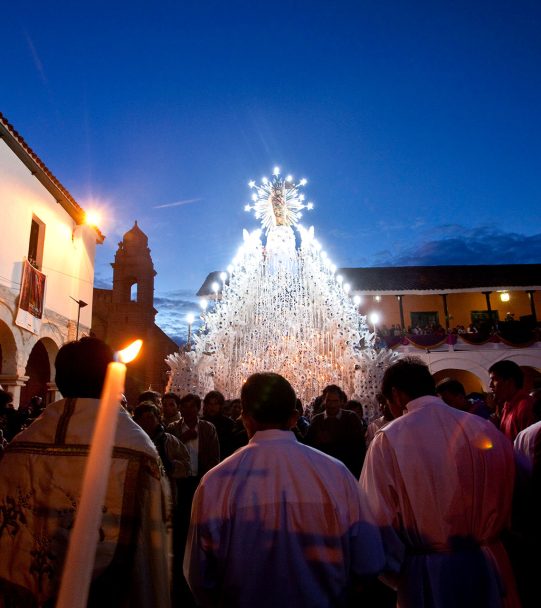Ayacucho
Ayacucho, in the southern Andean region of Peru, The city is waiting for you with an irresistible combination of history, lively culture and high altitude landscapes. This region stands out for its artistic legacy, traditional celebrations and a strong Quechua identity that can be felt in every corner. Its capital, Ayacucho, also known as Huamanga, dazzles with its colonial architecture, cobblestone streets and majestic churches. Ayacucho offers authentic experiences, living memory and a deep connection to the Andes.
Connectivity
You can reach the department of Ayacucho by road by private vehicle or bus through routes that connect Ayacucho, its capital city, with main cities such as Lima, The trip takes 10 hours. For those who prefer to fly, the Alfredo Mendívil Duarte National Airport, very close to the center of the city of Ayacucho. offers regular flights from Lima facilitating the fast and convenient arrival for visitors.
Ayacucho
Subscribe to receive news about Caminos Andinos
Temperature
Ranges from 3 °C to 25 °C
Weather
Dry and temperate cold
More destinations
Activities and attractions
Ayacucho invites you to explore an Andean region where culture, nature and tradition are felt at every step. Walk through its impressive historic center with 33 colonial churches and colonial mansions, discover lively expressions such as the dance of the scissors and be amazed by its museums, altarpieces and embroidery full of color and symbolism. Visit the archaeological remains of the Wari culture and the Inca ceremonial centers next to sacred lagoons. Walk among the giant Raimondi puyas, admire vicuñas and relax in volcanic hot springs. Participate in unique festivities such as Easter Week and taste authentic flavors such as pachamanca and puca spicy. Ayacucho is living heritage, art in every detail and imposing nature in the Andes of Peru.
Pampa de Ayacucho Historic Sanctuary
PHOTO: MINCETUR
Pikimachay Cave
PHOTO: PROMPERÚ
Temple of Santo Domingo in the city of Ayacucho
PHOTO: PROMPERÚ
Temple of the Monqachayoc sector of the Wari Archaeological Complex
PHOTO: PROMPERÚ
Procession of the Risen Christ during Holy Week in Ayacucho.
PHOTO: PROMPERÚ
Filigree piece
PHOTO: PROMPERÚ
Huamanga stone handicrafts
PHOTO: PROMPERÚ
Adobo
PHOTO: PROMPERÚ
Ayacucho Stew
PHOTO: PROMPERÚ
Ayacucho Embroidery
PHOTO: PROMPERÚ
Handicrafts of the Quinua people
PHOTO: PROMPERÚ
Discover what we do
-
-
CULTURE
Arequipa: Andean cities with colonial heritage
Ayacucho invites you to visit one of the most impressive historical centers of the southern Andes, where every corner holds history, art and tradition. Its 33 colonial churches, with golden altarpieces and baroque facades, reflect the colonial splendor that marked the city. The Plaza de Armas, surrounded by large houses and stone portals, is the cultural hub and social, presided by the majestic Cathedral of the seventeenth century. Visit the Triumphal Arch, symbol of independence, the Regional Historical Museum with pieces of the Wari culture, and the House Museum of the Altarpiece, dedicated to the art of Joaquin Lopez Antay. Churches like Santo Domingo and the Temple of the Company of Jesus stand out for their architecture and sacred art. Ayacucho is a trip to the past with a living Andean essence.
Waris and Incas: Great pre-Hispanic civilizations
Ayacucho invites you to discover its archaeological jewels. Very close to the city of Ayacucho, the Wari Archaeological Complex was the capital of the Wari culture (600-1100 A.D.), the first great Andean state, before the Inca Empire. Its monumental walls, subterranean passages andThe Intihuatana complex, with its museums and site museum, reveals their knowledge. Further south, the Intihuatana - Pumacocha Complex belongs to the Inca culture (1438-1532 A.D.) and was built during the Inca period (1438-1532 A.D.).taca for its ceremonial architecture next to a sacred lagoon, with a solar tower, ritual baths and views that connect heaven and earth.
Pikimachay Caves
Pikimachay Cave, located north of Ayacucho, is one of the oldest archaeological sites in Peru and South America. With evidence of human occupation up to 20,000 years old, this place is key to understanding the origins of the first Andean societies. To visit it is to enter the prehistory of the continent, in a natural environment that combines deep history and high Andean landscape.
Scissors Dance: UNESCO World Heritage Site
The dance of the scissors is one of the most impressive cultural expressions of Ayacucho and was declared Intangible Cultural Heritage of Humanity by UNESCO. Performed by dancers who execute acrobatics to the rhythm of violin and harp while making their metal scissors sound, this dance mixes art, dexterity and spirituality. To witness it in Andean festivities is to live an ancestral tradition full of strength, identity and connection with the sacred.
-
-
NATURE
Exploration trails:
Ayacucho offers you an unforgettable experience between nature and living memory. The Forest of Titankayocc stands out for being the largest in Peru with Puyas Raimondi, impressive Andean plants that reach up to 12 meters high. Nearby, the Pampa Galeras - Bárbara D'Achille National Reserve protects the vicuña in its natural habitat, in landscapes of puna and fresh air. Explore the Sondondo Valley, which surprises with its ideal climate and eucalyptus forests, watch condors and admire ingenious pre-Inca terraces. And in Quinua, the Historical Sanctuary of the Pampa de Ayacucho commemorates the battle that sealed Peru's independence.
Water that creates and connects
Ayacucho surprises you with landscapes of water and altitude that dazzle with their beauty. The Pumacocha Lagoon, next to the Intihuatana archaeological complex, offers a serene environment surrounded by history. Further south, the Parinacochas lagoon, at the foot of the Sara Sara volcano, is home to Andean flamingos and has been considered sacred since pre-Hispanic times. The Pachapupum volcano lagoon with sulfur-rich water and a temperature between 35° and 40° C reflects unique landscapes. The turquoise waters of Millpu form natural pools between limestone canyons. And ddiscover the Ruqruqa Waterfall in Ayacucho, a hidden paradise ideal for hiking, photos and contact. natural.
-
-
ANCESTRAL COMMUNITIES AND RURALITY
Ayacucho is a living land of native peoples, where Quechua and Ashaninka maintain a strong presence in more than 580 localities, representing 62.6 % of its population. When visiting its communities, In the Amazon, you will discover millenary traditions that intertwined with colonial influence, giving rise to a unique syncretism. This fusion is reflected in their art, celebrations and way of daily life, offering the visitor an authentic experience that connects with the spirituality, history and cultural diversity of the Andes and the Amazon.
Holidays:
Ayacucho invites you to experience its most emblematic festivities, where tradition becomes celebration. In March or April, Holy Week transforms Huamanga into a scene of faith with ten days of processions, music and popular fervor. In February, the Ayacucho Carnivals fill neighborhoods and towns with processions, dances and joy. In September, the Feast of the Virgin of Cocharcas in Vilcashuamán summons thousands of devotees in a great pilgrimage. And every December 9, in The Historical Sanctuary of the Pampa de Ayacucho commemorates the historic battle for South American independence with stagings of the battle of Ayacucho.
-
-
GASTRONOMY
Traditional Andean cuisine
The gastronomy of Ayacucho invites you to savor ancestral recipes full of identity. Don't miss the pachamanca, cooked underground with aromatic herbs and mixed meats, accompanied by of potatoes, beans, sweet potato and corn, all in the ancestral heat. Try the traditional spicy puca, a reddish stew of potatoes, peanuts and chili, accompanied by crispy pork rinds. Enjoy qapchi, a fresh potato, cheese and huacatay salad, and mondongo ayacuchano, thick and tasty, made with corn and tender meats. Accompany everything with a comforting Ayacucho punch, a hot drink made with peanuts, milk and spices, ideal for the cold Andean mornings.
-
-
CRAFTS
Ayacucho invites you to discover a vibrant folk art full of history. Ayacucho's retablos, colorful boxes with religious and traditional scenes, are living symbols of Andean identity. The Tablas de Sarhua, declared Cultural Heritage of Peru, narrate family genealogies in colorful paintings on wood. The Quinua pottery, made in adobe ovens, offers figures in relief.and utilitarian with great aesthetic value. Huamanga's stone carvings, made on alabaster, give shape to delicate images that combine tradition, faith and master craftsmanship. You cannot miss the handicrafts from the native Ashaninka community of Anato that surprises with its varieties such as jewelry, earrings, handbags and ponchos. Take with you art with tradition.
Ayacucho Embroidery: Andean Weavings
Ayacucho embroidery dazzles with its intense colors and designs full of Andean symbolism. Handmade with cotton or wool threads, it adorns garments, accessories and textile works with flowers, birds and traditional figures. Each stitch reflects identity and creativity. To wear Ayacucho embroidery is to wear a living work of art, made with history and heart.
CULTURE
Arequipa: Andean cities with colonial heritage
Ayacucho invites you to visit one of the most impressive historical centers of the southern Andes, where every corner holds history, art and tradition. Its 33 colonial churches, with golden altarpieces and baroque facades, reflect the colonial splendor that marked the city. The Plaza de Armas, surrounded by large houses and stone portals, is the cultural hub and social, presided by the majestic Cathedral of the seventeenth century. Visit the Triumphal Arch, symbol of independence, the Regional Historical Museum with pieces of the Wari culture, and the House Museum of the Altarpiece, dedicated to the art of Joaquin Lopez Antay. Churches like Santo Domingo and the Temple of the Company of Jesus stand out for their architecture and sacred art. Ayacucho is a trip to the past with a living Andean essence.
Waris and Incas: Great pre-Hispanic civilizations
Ayacucho invites you to discover its archaeological jewels. Very close to the city of Ayacucho, the Wari Archaeological Complex was the capital of the Wari culture (600-1100 A.D.), the first great Andean state, before the Inca Empire. Its monumental walls, subterranean passages andThe Intihuatana complex, with its museums and site museum, reveals their knowledge. Further south, the Intihuatana - Pumacocha Complex belongs to the Inca culture (1438-1532 A.D.) and was built during the Inca period (1438-1532 A.D.).taca for its ceremonial architecture next to a sacred lagoon, with a solar tower, ritual baths and views that connect heaven and earth.
Pikimachay Caves
Pikimachay Cave, located north of Ayacucho, is one of the oldest archaeological sites in Peru and South America. With evidence of human occupation up to 20,000 years old, this place is key to understanding the origins of the first Andean societies. To visit it is to enter the prehistory of the continent, in a natural environment that combines deep history and high Andean landscape.
Scissors Dance: UNESCO World Heritage Site
The dance of the scissors is one of the most impressive cultural expressions of Ayacucho and was declared Intangible Cultural Heritage of Humanity by UNESCO. Performed by dancers who execute acrobatics to the rhythm of violin and harp while making their metal scissors sound, this dance mixes art, dexterity and spirituality. To witness it in Andean festivities is to live an ancestral tradition full of strength, identity and connection with the sacred.
NATURE
Exploration trails:
Ayacucho offers you an unforgettable experience between nature and living memory. The Forest of Titankayocc stands out for being the largest in Peru with Puyas Raimondi, impressive Andean plants that reach up to 12 meters high. Nearby, the Pampa Galeras - Bárbara D'Achille National Reserve protects the vicuña in its natural habitat, in landscapes of puna and fresh air. Explore the Sondondo Valley, which surprises with its ideal climate and eucalyptus forests, watch condors and admire ingenious pre-Inca terraces. And in Quinua, the Historical Sanctuary of the Pampa de Ayacucho commemorates the battle that sealed Peru's independence.
Water that creates and connects
Ayacucho surprises you with landscapes of water and altitude that dazzle with their beauty. The Pumacocha Lagoon, next to the Intihuatana archaeological complex, offers a serene environment surrounded by history. Further south, the Parinacochas lagoon, at the foot of the Sara Sara volcano, is home to Andean flamingos and has been considered sacred since pre-Hispanic times. The Pachapupum volcano lagoon with sulfur-rich water and a temperature between 35° and 40° C reflects unique landscapes. The turquoise waters of Millpu form natural pools between limestone canyons. And ddiscover the Ruqruqa Waterfall in Ayacucho, a hidden paradise ideal for hiking, photos and contact. natural.
ANCESTRAL COMMUNITIES AND RURALITY
Ayacucho is a living land of native peoples, where Quechua and Ashaninka maintain a strong presence in more than 580 localities, representing 62.6 % of its population. When visiting its communities, In the Amazon, you will discover millenary traditions that intertwined with colonial influence, giving rise to a unique syncretism. This fusion is reflected in their art, celebrations and way of daily life, offering the visitor an authentic experience that connects with the spirituality, history and cultural diversity of the Andes and the Amazon.
Holidays:
Ayacucho invites you to experience its most emblematic festivities, where tradition becomes celebration. In March or April, Holy Week transforms Huamanga into a scene of faith with ten days of processions, music and popular fervor. In February, the Ayacucho Carnivals fill neighborhoods and towns with processions, dances and joy. In September, the Feast of the Virgin of Cocharcas in Vilcashuamán summons thousands of devotees in a great pilgrimage. And every December 9, in The Historical Sanctuary of the Pampa de Ayacucho commemorates the historic battle for South American independence with stagings of the battle of Ayacucho.
GASTRONOMY
Traditional Andean cuisine
The gastronomy of Ayacucho invites you to savor ancestral recipes full of identity. Don't miss the pachamanca, cooked underground with aromatic herbs and mixed meats, accompanied by of potatoes, beans, sweet potato and corn, all in the ancestral heat. Try the traditional spicy puca, a reddish stew of potatoes, peanuts and chili, accompanied by crispy pork rinds. Enjoy qapchi, a fresh potato, cheese and huacatay salad, and mondongo ayacuchano, thick and tasty, made with corn and tender meats. Accompany everything with a comforting Ayacucho punch, a hot drink made with peanuts, milk and spices, ideal for the cold Andean mornings.
CRAFTS
Ayacucho invites you to discover a vibrant folk art full of history. Ayacucho's retablos, colorful boxes with religious and traditional scenes, are living symbols of Andean identity. The Tablas de Sarhua, declared Cultural Heritage of Peru, narrate family genealogies in colorful paintings on wood. The Quinua pottery, made in adobe ovens, offers figures in relief.and utilitarian with great aesthetic value. Huamanga's stone carvings, made on alabaster, give shape to delicate images that combine tradition, faith and master craftsmanship. You cannot miss the handicrafts from the native Ashaninka community of Anato that surprises with its varieties such as jewelry, earrings, handbags and ponchos. Take with you art with tradition.
Ayacucho Embroidery: Andean Weavings
Ayacucho embroidery dazzles with its intense colors and designs full of Andean symbolism. Handmade with cotton or wool threads, it adorns garments, accessories and textile works with flowers, birds and traditional figures. Each stitch reflects identity and creativity. To wear Ayacucho embroidery is to wear a living work of art, made with history and heart.
 Skip to content
Skip to content

